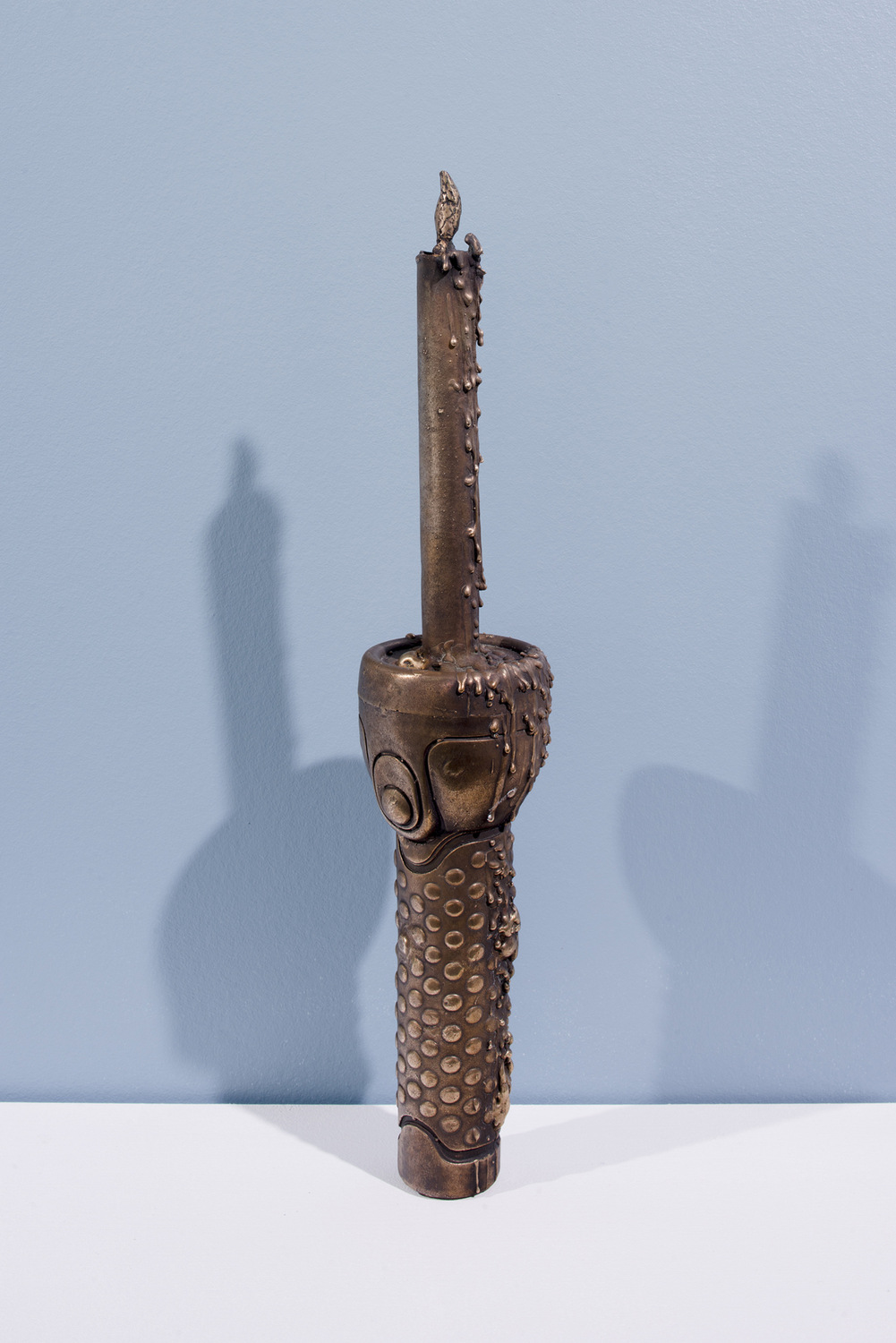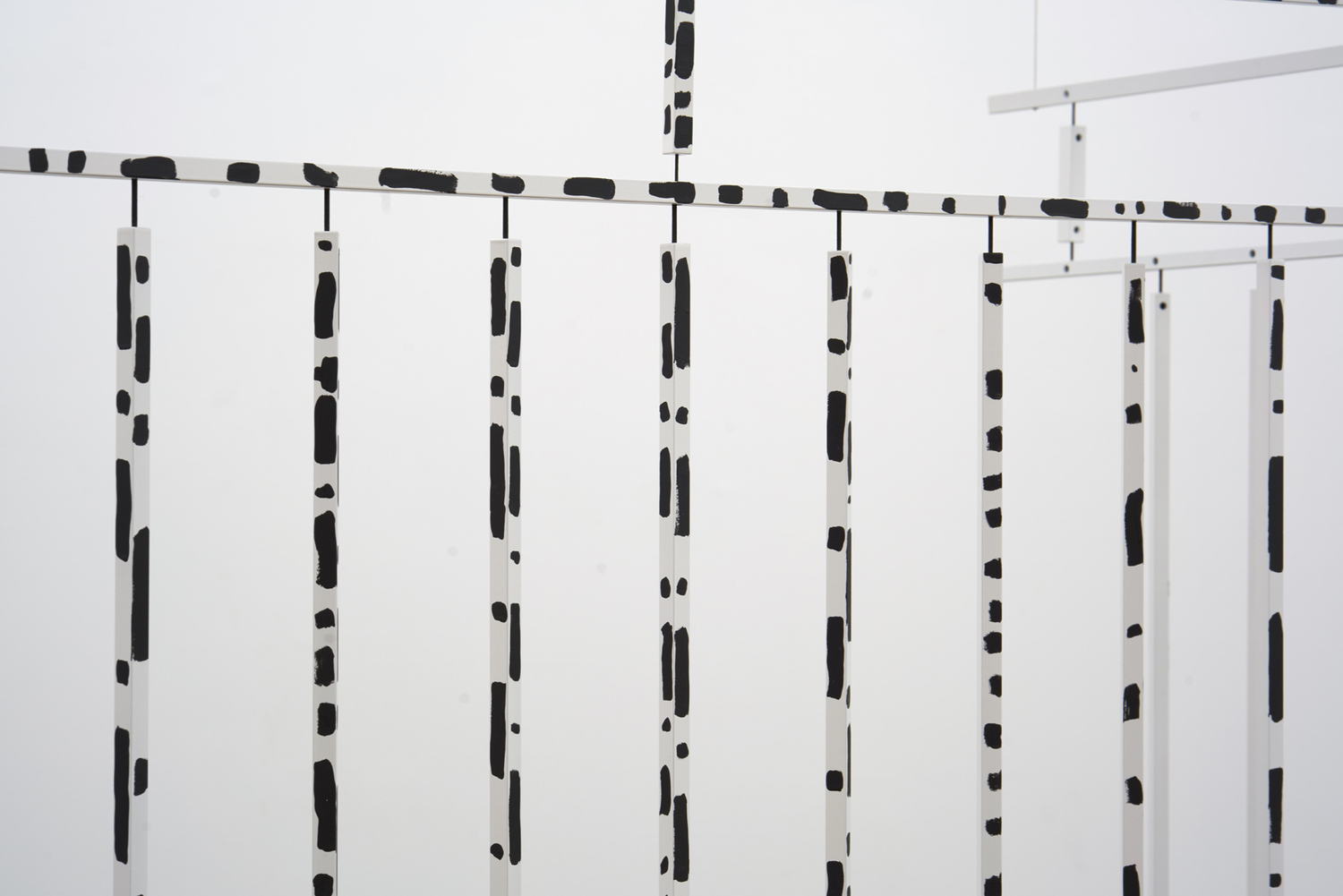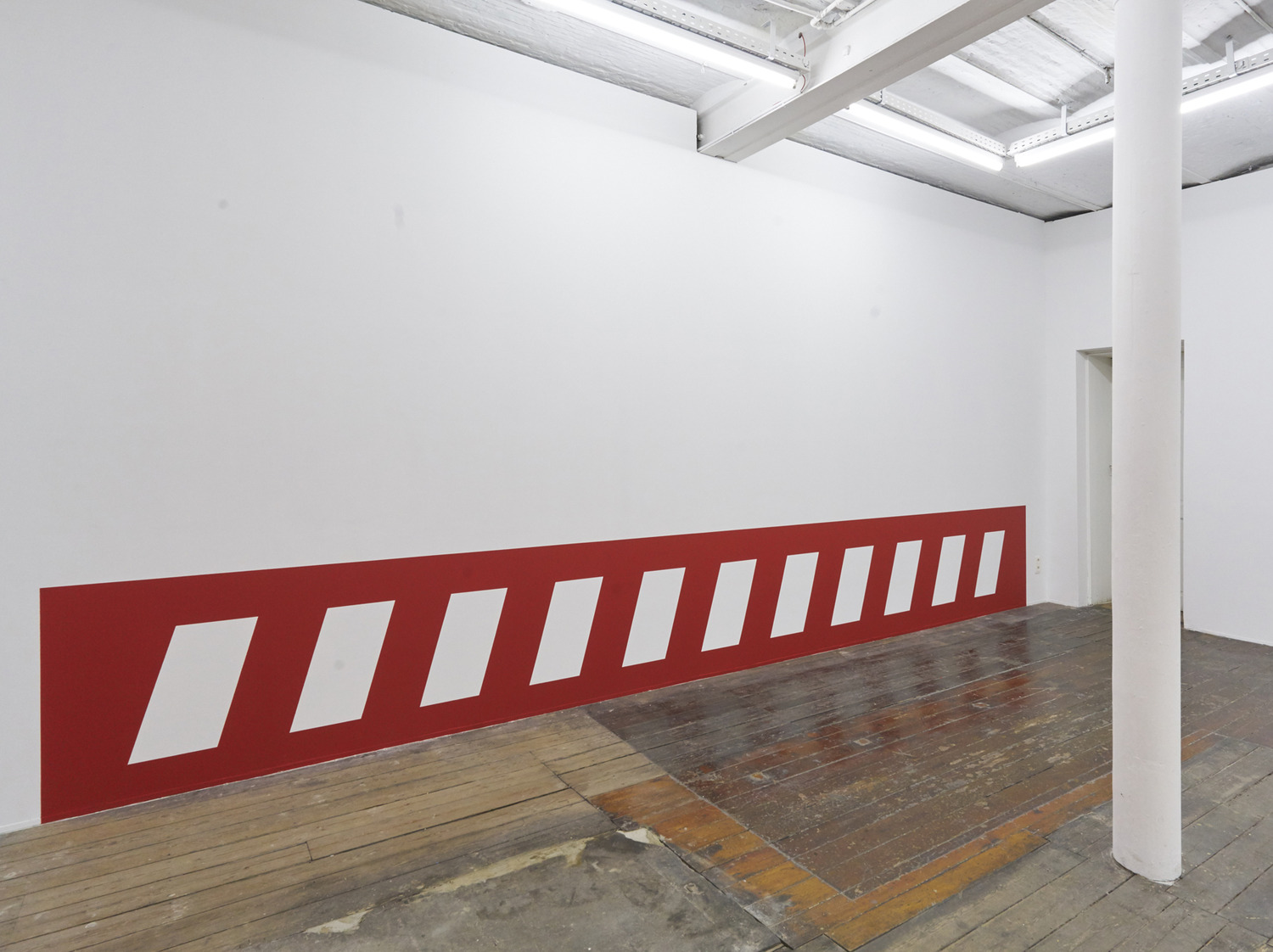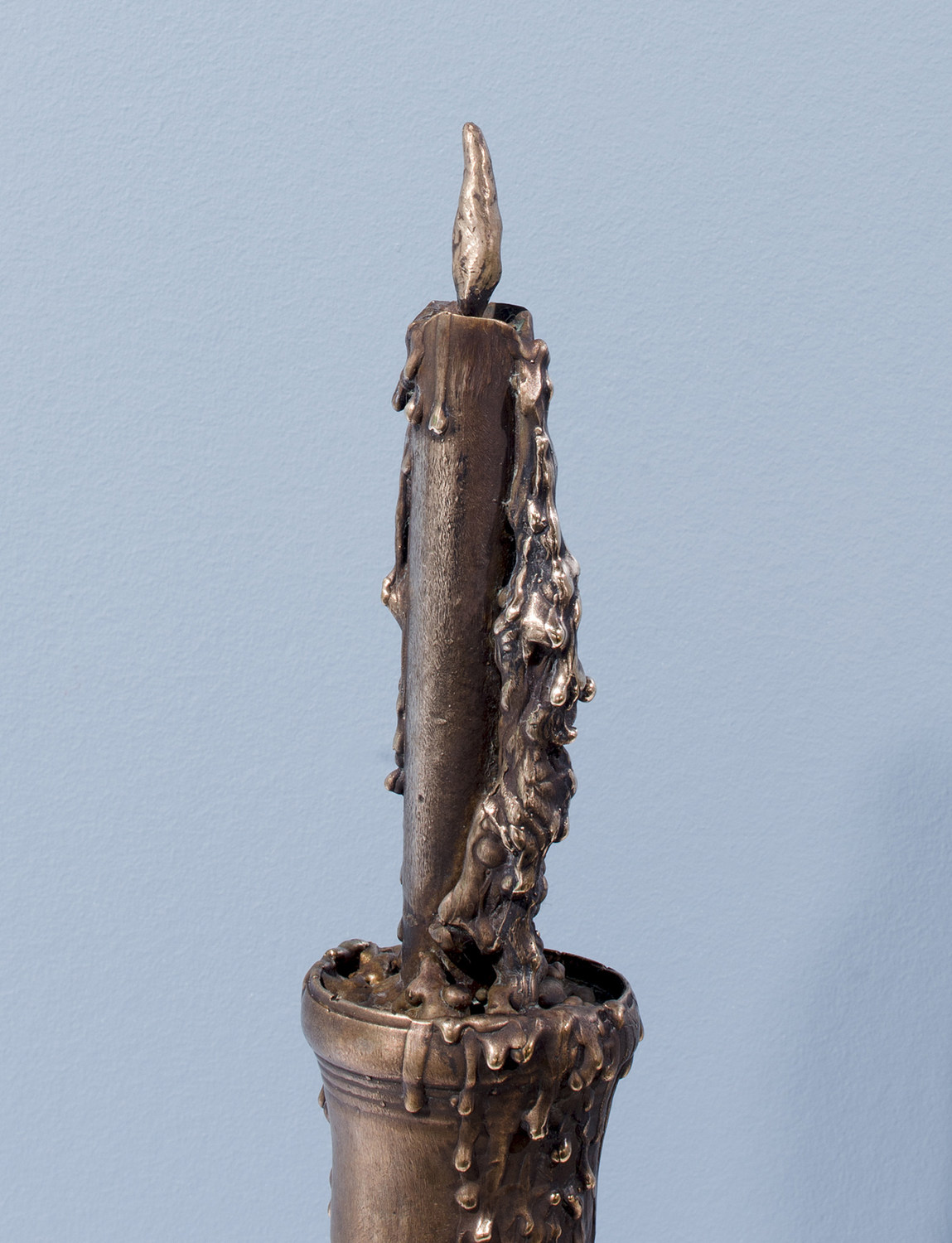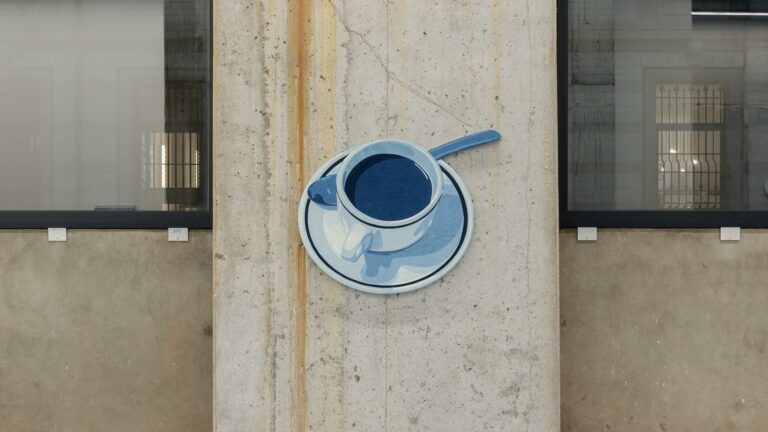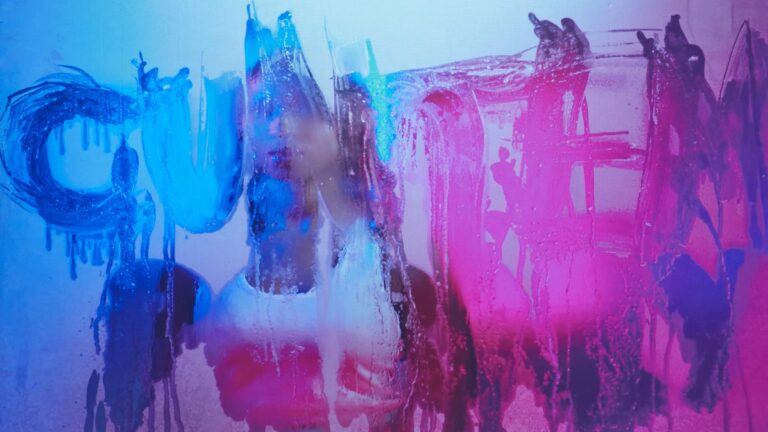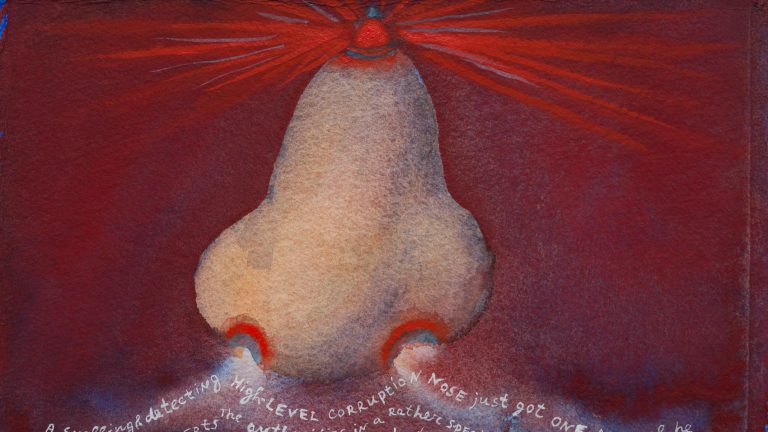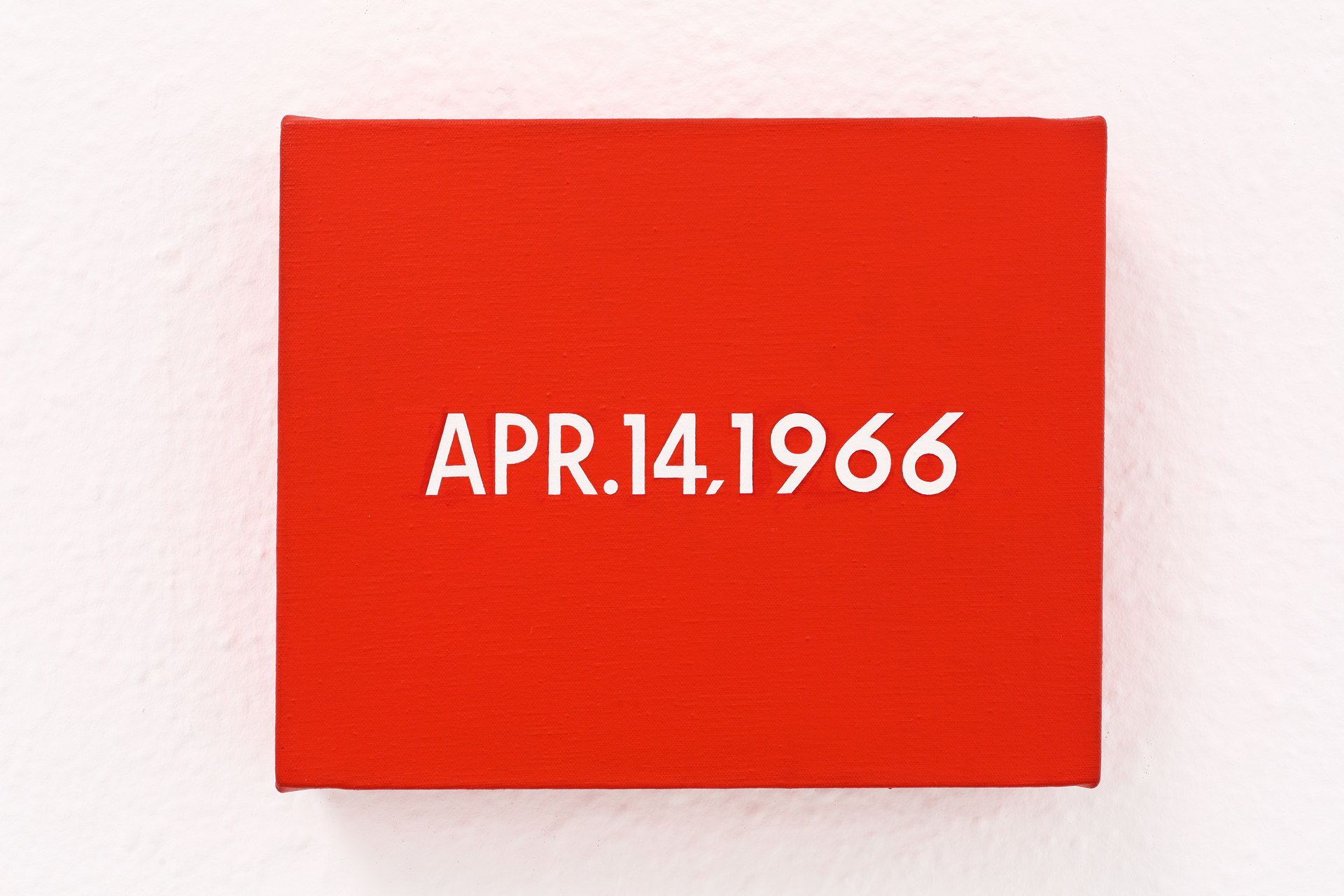Artist: Yonatan Vinitsky
Exhibition title: Sortie Définitive
Venue: Mon Chéri, Brussels, Belgium
Date: December 10, 2015 – January 23, 2016
Photography: Benoit Cattiaux, images copyright and courtesy of the artist and Mon Chéri, Brussels
It is not unusual for Yonatan Vinitsky’s solo exhibitions to look like group exhibitions. The formal diversity of his works as well as that of the techniques used often produce a heterogeneous landscape that a distracted viewer would have trouble attributing to one and the same person. There is nothing to suggest that this is not the intended effect.
Yonatan Vinitsky’s exhibition at “Mon Chéri” brings together three of the artist’s new productions, along with two recent series of works (2014).
At the root of each of the artist’s works is an object or image that preceded it. These were found either through research or as the result of a chance meeting, a moment of serendipity. This source could just as well come from popular culture, the world of art, vernacular expressions or from the most anonymous domestic environment. Yonatan Vinitsky makes no distinction between these different spheres, nor does he place them in a hierarchy. In a spirit that is quite the opposite of ironic commentary, he gives them sincere attention, in a way that sometimes seems like a kind of discreet tribute. Although Vinitsky reproduces forms that already exist, his practice is not at all similar to that of an appropriationist, and is even less like that of a copyist. Far from any kind of mimetic production, his work is above all a translation, a transformation of a source-object into a work of which he is undoubtedly the creator. Consequently, his practice is understood as an examination of all the choices and decisions that precede the work, as well as all the techniques and materials that go into it.
It seems obvious, and also a bit naive, to assert that Yonatan Vinitsky’s works can be appreciated independently of their relationship with their source object. From the point of view of form, they are quite intriguing and appealing enough to go without any discussion of their aesthetic autonomy. Nevertheless, for an overall understanding of his work, it seems useful to show their foundations, as well as the operations carried out. This is what this text deliberately endeavours to do.
As an example, let us take the two sculptures located at the centre of the exhibition. They are entitled Sortie Définitive i (Auto-Romantic Panic) (2015) and Sortie Définitive ii (Blooming Something) (2015) are both inspired by a balcony found by chance during a stroll in Paris. Quite obviously, it is not the balcony’s charming qualities that interest Vinitsky, but rather its railing’s ornamental dimension. Its modest-looking, even generic forged-iron structure would go unnoticed by anyone who has become too familiar with the Parisian urban landscape. This is also the case for Vinitsky, who, having lived in Paris for a few years, appreciates its banal character, without qualities. He therefore separated the guardrail from the building in order to reproduce it, and instead of attaching it to the wall to artificially replay its function, he decided to hang it, floating like a mobile in the middle of the gallery space. Each of its constituent aluminium elements having been carefully cut and then joined back together with different coloured elastics, its structure has a flexibility that can potentially put it in motion. The two sculptures have a similar structure, differing only in the use of aluminium rods (square for one of them, round for the other) and in their colour treatment. The first is painted black and white, while the second has a multicoloured pallet based on another visual source, specifically a terrace glimpsed in Jerusalem.
The multicolour, flecked surface of the guardrail opens onto an important part in the artist’s work: his fascinated but conflicted rela- tionship with abstraction. It is based on a somewhat bitter acknowledgement, that of his (relative) failure to produce abstract painting. Is this because of its metaphysical, even mystical dimension, or contrarily because of its rational and programmatic character? Only he knows, but for now it seems like a continent that is too far away for him to reach. The series Crisscrossing the World (2014) provides something of an answer to the question of how to produce an abstract painting despite everything. “I know how to replicate, not how to paint” Vinitsky has stated. For him, reproducing an abstract painting comes down to conducting an investigation into the gestures that led to its original apparition, understanding its intentions. The four paintings that make up this series originate from one of the major figures of abstraction, Josef Albers, himself the inventor of a colour theory with Interaction of Color, which appeared in 1963. Vinitsky chose to take inspiration not from a famous Albers series like Homage to the Square (1949-1976) but rather from an earlier, lesser- known work from 1939 entitled Janus. Although the composition was in a sense delegated to Albers, Vinitsky for his part carried out simple manipulations similar to those that can be done with image-retouching software. The first painting (North) is a copy of Albers’s original work, but its composition has been noticeably altered – three distinct colours instead of a grading from black to grey, as well as the apparition of thick white lines that are not in the original. East is the mirror version, while South becomes the upside-down version of North, and East that of West. Painted in gouache on glass, the paint-application method itself replays this reversal principle, since it forces the artist to paint on the back of the glass, therefore backwards.
Although museum picture rails and exhibition catalogues often serve as toolboxes from which one may feel free to take motifs and colours, other places unconnected to the world of art can lend themselves to this as well. This may be the case for the private space of a stairwell climbed by the artist in a Bucharest building. In the stairwell, each floor is linked by a large, two-coloured marble plinth with basic geographic shapes. Except that, only once between two floors, for lack of marble, the plinth is reproduced in a “cheap” version, using only red and white paint. It would be reasonable to think that Vinitsky could have enjoyed seeing this copy as a gesture similar to his own practice. Abandoning the idea of the stairwell’s own vertical progression, Table of Content (Chapter 1: The Begin- ning……………….3) (2015) develops the geometric composition horizontally in the style of a frieze.
2014 was a year of candles for Vinitsky. First he painted a beautiful series of seven paintings with Dadaist undertones entitled Candle Sock (2014). Each represents a day of the week, the paintings depict a coloured sock (a different one every time) topped by a candle that becomes shorter and shorter as one advances through the week. That same year, the artist produced An Unexpected Mee(l)ting I – IX (2014), a series of short, bronze sculptures inspired by an image from a 1970s Duracell advertisement. To highlight the quality of its new batteries, the ad shows two flashlights: one of them perfectly normal, shining brightly, while the other one curiously has a candle attached to it, and therefore only emits a weak glow. From this somewhat aberrant superimposition of two lighting processes from two distinct ages of technology, a hybrid, poetic object emerges that has a strange but real beauty. Vinitsky’s sculptures are a materialisation of this advertising creation inspired by surrealism, and casted as they are in bronze, they are a way to praise its felicitous intuition.
It would be appropriate to finish with The Back Background (“I’m just putting you in the picture”) (2015) which is the last image one sees when leaving the exhibition. Placed on the entrance wall inside the gallery (therefore behind the back of the entering viewer), the poster covers it completely. The printed image is not clearly identifiable at first glance. It comes from the artist’s visit to a museum in Bucharest, The Museum of the Romanian Peasant, a place that, as its name suggests, offers visitors a large collection of objects that evoke the rural way of life in Romania. This ethnographic museum also contains period rooms that recreate the domestic environment of farming families. The image comes from one of these rooms, where we see a storage shelf in an interior that seems modest. Pinned to it is a concertinaed sheet of paper with cuts at the centre that reveal a negative image of the human figures. Vinitsky first printed this pho- tograph in a small format and folded it eight times in order to be able to put it in his pocket. When he unfolded the picture, some wear marks appeared, creating a new stratum on the surface of the image. This was then scanned in order to flatten the volume effect caused by the folding. Out of this, Vinitsky developed an enlarged format so that the photo’s cut-out figures would be the same scale as the people entering the exhibition. Integrated into the poster, another photograph gives the actual scale of the photographed environment. Finally, on this photograph, there appears a laminated print of the first image (the one that was folded) in its original format. The Back Background (“I’m just putting you in the picture”) (2015) is an an image full of surprises, an amusing play on the scales of photographic images and on their textures (printed on three different types of paper), as well as a mise en abyme process that is as easy to understand as it is difficult to describe. As everyone will have noticed, it also lends its title to the exhibition.
Mathieu Loctin
Yonatan Vinitsky, Sortie Définitive i (Auto-Romantic Panic), 2015
Yonatan Vinitsky, Sortie Définitive i (Auto-Romantic Panic), 2015 (detail)
Yonatan Vinitsky, Sortie Définitive ii (Blooming Something), 2015
Yonatan Vinitsky, Sortie Définitive ii (Blooming Something), 2015 (detail)
Yonatan Vinitsky, The Back Background (“I’m just putting you in the picture”), 2015
Yonatan Vinitsky, Crisscrossing the World (West), 2014
Yonatan Vinitsky, Crisscrossing the World (South), 2014
Yonatan Vinitsky, Crisscrossing the World (East), 2014
Yonatan Vinitsky, Crisscrossing the World (North), 2014
Yonatan Vinitsky, Table of Content (Chapter 1: The Beginning……………….3), 2015
Yonatan Vinitsky, An Unexpected Mee(l)ting II, 2014
Yonatan Vinitsky, An Unexpected Mee(l)ting II, 2014 (detail)
Yonatan Vinitsky, An Unexpected Mee(l)ting II, 2014 (detail)
Yonatan Vinitsky, An Unexpected Mee(l)ting II, 2014 (detail)
Yonatan Vinitsky, An Unexpected Mee(l)ting IV, 2014
Yonatan Vinitsky, An Unexpected Mee(l)ting IV, 2014 (detail)
Yonatan Vinitsky, An Unexpected Mee(l)ting IV, 2014 (detail)
Yonatan Vinitsky, An Unexpected Mee(l)ting V, 2014
Yonatan Vinitsky, An Unexpected Mee(l)ting V, 2014 (detail)
Yonatan Vinitsky, An Unexpected Mee(l)ting VII, 2014
Yonatan Vinitsky, An Unexpected Mee(l)ting VII, 2014 (detail)
Yonatan Vinitsky, An Unexpected Mee(l)ting VIII, 2014
Yonatan Vinitsky, An Unexpected Mee(l)ting VIII, 2014 (detail)

